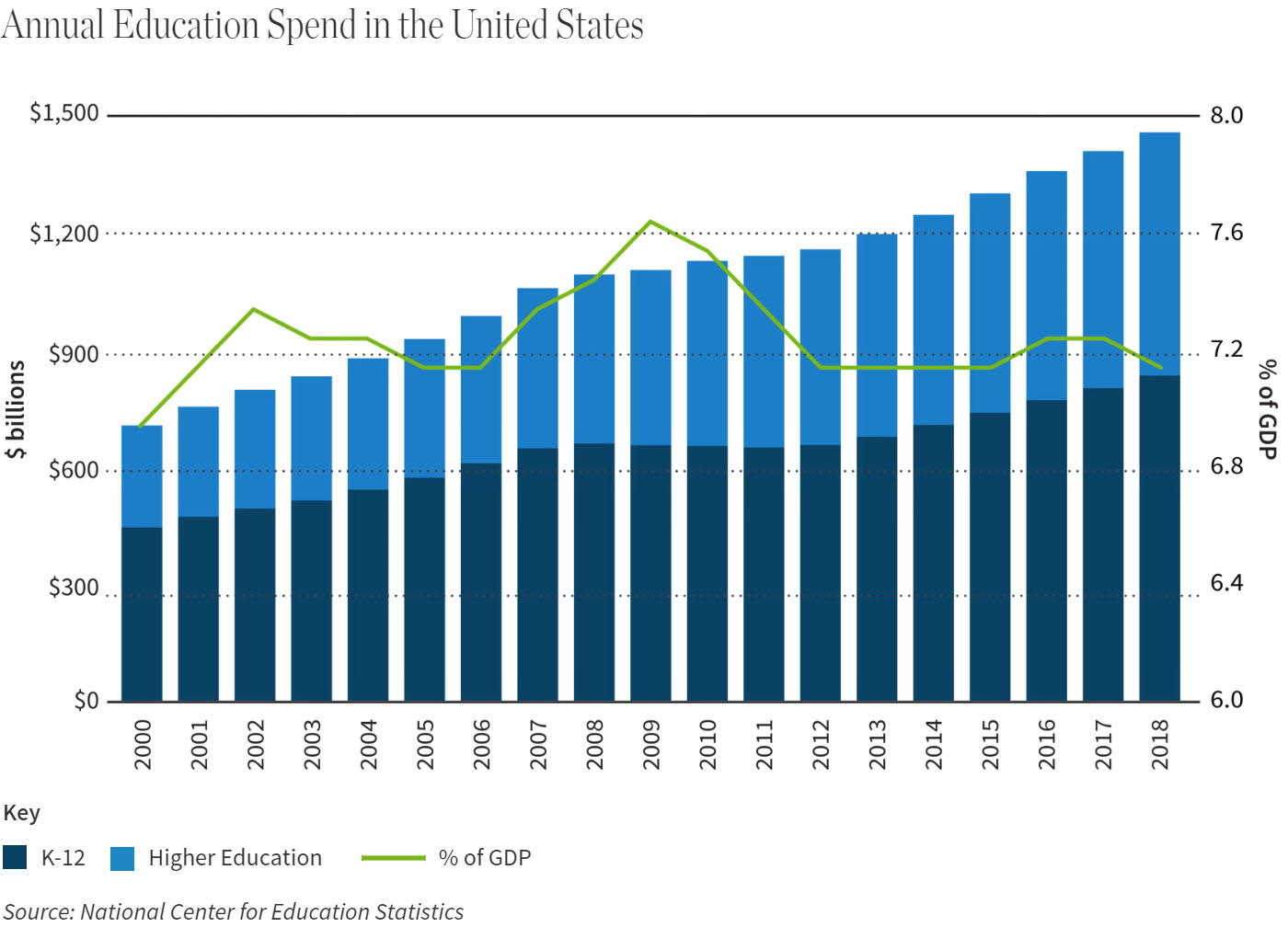When thousands of schools and universities across the country shut down overnight last spring to stop the spread of coronavirus, educators were caught off guard with limited or no digital tools to teach students.
They scrambled to find resources so students could finish their class work online. So parents and students were generally forgiving given the emergency. By fall, expectations were higher.
Stephen Sheldon, a William Blair equity analyst covering the education sector, says educational institutions have been and are continuing to look for any and all digital learning solutions—from online classes and tutoring to sophisticated interactive curriculums and management services.
“The demand is going through the roof,” Sheldon says. “This is especially the case in higher ed. The longer this goes on and the longer there’s uncertainty, more universities will need to make the decision to invest and push people online, or at a minimum have solid online contingency plans to handle any incremental in-person restrictions.”

He is clear about the pressure schools are under: “If parents and students are paying the same tuition and a university is forced to go online and does it in a very low quality way, it could be detrimental to the perception of value and negatively impact enrollment trends.”
K–12, higher ed facing different stresses
Sheldon cites the ed tech companies he covers—K12 [LRN], 2U [TWOU], Chegg [CHGG], and Pluralsight [PS]—as examples.
“Ending September, their shares on average have doubled the return of the S&P 500 since schools went into lockdown on March 13,” he says. “Additionally, since the broader market bottomed in late March, shares are up on average well over 100% even with a more recent pullback.”
Universities clearly have varying degrees of technology expertise and funding. But Sheldon says many have struggled to launch quality online capabilities at scale with quick turnaround times.
Such struggles and delays are concerning, he says. But the crisis is also presenting opportunities for ed tech providers who can step in and plug these holes across the education landscape. Longer term, the new normal for students will also support broader adoption of online learning.
…we are becoming more convinced about accelerating structural adoption of online learning beyond the pandemic.
Stephen Sheldon
While higher education is throwing both capital and energy at getting a rich and focused learning experience online ASAP, the challenges facing the kindergarten through high school levels are more daunting.
“K–12 is a somewhat different story,” Sheldon adds. “Many school districts just don’t have the capital. And shifting online involves many more administrators, teachers, students, many more of everything. It also requires more parent involvement, especially with younger students. So it’s not easy to do quickly. But there are still many technology providers out there.”
“Every school, every district is looking at what makes the most sense and trying to run with it. It’s creating higher demand for all the technology and content. But again, it’s a highly fragmented space,” he adds.
From a technology perspective, both higher education and K–12 will rely heavily on third-party software vendors to provide online options. These include video collaboration providers like Zoom [ZM] and Google Meet.
There are also widely sought learning management systems (LMS)—such as Instructure’s Canvas and Blackboard—that offer platforms to manage and organize education materials and track student progress.
2U and K12
Sheldon says two companies well positioned to capitalize from the shift to online education are 2U and K12.
2U—a provider of online degree programs, short courses, and boot camps through university partnerships—in August reported second-quarter revenue 35% year-over-year to $183 million. The company expects organic revenue growth to accelerate in the second half of 2020, reflecting increased demand for its offerings from both universities and students. Sheldon notes that higher recent demand could be a multi-year tailwind to 2U’s top-line growth.
K12, the largest provider of online programs to U.S. primary and secondary schools, has seen online enrollments increase to over 170,000 as of August 21. That represents over 40% growth relative to last year with over a month left in the enrollment window.
“While some of the boost could be temporary, we are becoming more convinced about accelerating structural adoption of online learning beyond the pandemic,” Sheldon says.

To receive the firm’s research reports, contact your William Blair representative. View disclosure information here.



